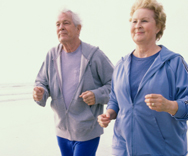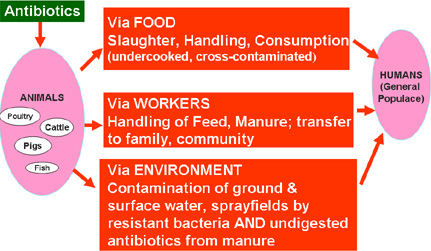- Fitness (19)
- News & Reviews (25)
- Nutrition (20)
- Science (10)
- Supplements (6)
- Technologies (8)
- The Arts (9)
Impacting Chronic Illness—Through Preventive Care
July 19th, 2017
What is “preventive”? Whole-person, common-sense, logical, proactive. And not always in line with our established, maladaptive-but-comfortable habits.
What is “chronic illness”? For one thing, expensive. Chronic medical conditions need constant maintenance so they don’t spin out of control. This usually means medication in our healthcare world, or a restricted diet, or ongoing consumption of therapies like dialysis. If that’s all it were, we could grudgingly handle it. But unfortunately, each chronic condition doesn’t tend to stay caged in its organ system. Chronic illness all too often leads to multi-system breakdown. But that breakdown doesn’t usually start with all systems at once.
A chronic illness isn’t isolated but rather is incorporated into other systems, because the body is comprised of integrated organ systems. (“Organ system” is actually a construct that we map onto the utterly complex functioning whole of a human body, in order to make sense of it. Systems are categories that we invent. Chinese medicine sees the body as comprised of systems that are foreign to Western medicine.) Different genetics, different stressors, determine which system is the weakest link in the chain for each person.
The good news: everything you do in terms of lifestyle changes affects the chronic illness that you may happen to have—as well as others you don’t have (yet).
In other words, when you make targeted changes in your lifestyle to address one chronic illness—the one you have, or the one you’re afraid you’ll get—you usually decrease your risk factors for collecting new diagnoses. IF, if you make the right changes. The health fad of the moment, whether it’s drinking coffee with butter or buying “gluten-free” snacks, may not be what you really need.
Until we understand more about our genome and how our external environment, activity, stressors and food impact on it, we probably won’t be able to customize health advice perfectly. It’s already generally accepted (as profiled in a May 25, 1917 Time Magazine cover article), that no one weight-loss diet fits all, for example. But doctors like me can help you make an educated guess about what is likely to have the biggest positive impact, and help you formulate a realistic, step-wise plan of action. To tell the truth, you need a plan of changes in action—that’s even harder work.
What makes this hard work easier? The fact that the plan of changes in your actions is multi-faceted. That means that you can usually make a shift in your health in many ways, via many approaches. Usually, there’s more than one way in. You don’t have to start with the most challenging change in lifestyle, nor to change everything at once. You can choose the slice of the action pie that’s most digestible.
Here’s an example: Osteoporosis is a chronic disease that needs to be managed. Osteoporosis has been called “the good news disease,” because the lifestyle changes you make to control osteoporosis help just about everything else. More exercise, improving balance, better diet…the lifestyle components of treatments for osteoporosis are actually prevention for cardiovascular disease , diabetes, arthritis, etc.
The example of osteoporosis is a counterexample of the role of fear in medical care—a segue to denial and avoidance that costs patients so much good health, and the system so much money.
Fear is a large part of the reason why people don’t take action to reverse or slow chronic illness when they have it. The bar can be set so high, the worry so gripping, that patients become frozen in their fear. The thought of starting a new lifestyle can provoke so much anxiety that people just push it out of their minds. Or rationalize inaction. So the diet change they ought to make for their diabetes—or whatever—never happens.
Fear-based medical motivation is as likely to trigger denial as compliance. Non-compliance with medical care is a problem that doctors grapple with, but it’s a problem of our own making. And to minimize this problem, we have to go outside the medical system and look at our culture as a whole. (Advertising, the rewards we give out children and ourselves….etc.)
Our current system implicitly encourages fear: a bizarre reality show where each person is the star of what could be the drama of their medical journey—do I have heart disease yet? Cancer? Parkinson’s? Titillating, but worth it to be able to walk away from an annual exam with a clean bill of health and do what I’m doing and take the pills I’m taking (maybe with a change in dose)—till next year. Or will it be an ambulance trip to the emergency room with chest pain? Nope, so far so good. Don’t think about it. Or think about it and worry, instead of doing something constructive, like exercising and eating well. As noted above, what “well” is differs slightly for different people with different conditions.
Prevention offers a way out of a fear-based mindset.
First, when you do what you do for prevention, you change the overall body system context and give chronic illnesses a chance to lift.
Second, part of getting out the exit door of the medical treatment cycle ”building” is not getting sick again. Preventive care (vs medical care) helps the chances that you will not get another illness.
A “care” system should be one that searches for health, not one that is organized around searching and treating illness. Illness will be found in a health-goal system just as well, if not better than in an illness-goal system—but I expect that it will be found less often because it will occur less often.
Filed under News & Reviews | Comments Off on Impacting Chronic Illness—Through Preventive CareSick Pet Symptoms: Six Surprising Signs of Illness
September 20th, 2015
Looking back, clues were there. Olivia, a robust Rottweiler/Shepherd mix, knocked at the door to come back in after just a few minutes outside in the yard she used to love–a real change in behavior. She pawed at her ear, had more eye goop, started sneezing. Most telling, our other dog began to lick her face months ago–before any of the other changes. He knew…it wasn’t allergies.
The CT scan showed a huge tumor that went from her nose to her brain, 8 by 4 centimeters. Yet she continued to play, run, love her walks, and adore food. (All food!)
The clues were there; I just didn’t know how to read them. As a doctor, I assumed I’d be able to pick up on signs of serious illness in my dogs. I was wrong! So I’m passing this article on to you, hoping it will help you help your pets.
Filed under News & Reviews | Comments Off on Sick Pet Symptoms: Six Surprising Signs of Illness
Antibacterial Personal Care Products Are Linked to Allergies in Children
June 20th, 2012
 From Science Daily (June 19, 2012) This study gives us yet another reason to use more natural products! Cathie— Exposure to common antibacterial chemicals and preservatives found in soap, toothpaste, mouthwash and other personal-care products may make children more prone to a wide range of food and environmental allergies, according to new research from Johns Hopkins Children’s Center. Results of the NIH-funded study are published online ahead of print June 18 in the Journal of Allergy and Clinical Immunology.
From Science Daily (June 19, 2012) This study gives us yet another reason to use more natural products! Cathie— Exposure to common antibacterial chemicals and preservatives found in soap, toothpaste, mouthwash and other personal-care products may make children more prone to a wide range of food and environmental allergies, according to new research from Johns Hopkins Children’s Center. Results of the NIH-funded study are published online ahead of print June 18 in the Journal of Allergy and Clinical Immunology.
Using existing data from a national health survey of 860 children ages 6 to 18, Johns Hopkins researchers examined the relationship between a child’s urinary levels of antibacterials and preservatives found in many personal-hygiene products and the presence of IgE antibodies in the child’s blood. IgE antibodies are immune chemicals that rise in response to an allergen and are markedly elevated in people with allergies.
“We saw a link between level of exposure, measured by the amount of antimicrobial agents in the urine, and allergy risk, indicated by circulating antibodies to specific allergens,” said lead investigator Jessica Savage, M.D., M.H.S., an allergy and immunology fellow at Hopkins. Continue reading »
Little Bit of Exercise, Big Benefits
October 6th, 2011
 ScienceDaily: A new University of Colorado Boulder study shows that a small amount of physical exercise could profoundly protect the elderly from long-term memory loss that can happen suddenly following infection, illnesses or injury in old age.
ScienceDaily: A new University of Colorado Boulder study shows that a small amount of physical exercise could profoundly protect the elderly from long-term memory loss that can happen suddenly following infection, illnesses or injury in old age.
In the study, CU-Boulder Research Associate Ruth Barrientos and her colleagues showed that aging rats that ran just over half a kilometer each week were protected against infection-induced memory loss.
“Our research shows that a small amount of physical exercise by late middle-aged rats profoundly protects against exaggerated inflammation in the brain and long-lasting memory impairments that follow a serious bacterial infection,” said Barrientos of the psychology and neuroscience department.
“Strikingly, this small amount of running was sufficient to confer robust benefits for those that ran over those that did not run,” Barrientos said. “This is an important finding because those of advanced age are more vulnerable to memory impairments following immune challenges such as bacterial infections or surgery. With baby boomers currently at retirement age, the risk of diminished memory function in this population is of great concern. Thus, effective noninvasive therapies are of substantial clinical value.”
Filed under Fitness | Comments Off on Little Bit of Exercise, Big BenefitsAntibiotic Resistance
September 16th, 2011

A Report from the Physicians Committee for Responsible Medicine: The growing public health threat of antibiotic resistance is almost entirely attributed to antimicrobial use in animal agriculture.
Animals raised for meat and dairy products are routinely treated with antibiotics to promote growth and reduce the risk of illnesses that would otherwise be common in crowded living conditions. Currently, 80 percent of antibiotics used in the United States are administered to animals on farms.
Widespread use of antibiotics can give rise to resistant bacteria, which may or may not cause disease in the animals. Through contact with farm workers and contaminated waste runoff, resistant bacteria can spread to humans and to other animals.
Bacteria can also transfer resistance traits to other strains and classes of bacteria.
So the fewer antibiotics we consume on a daily basis through animal products, the healthier we’ll be! — Cathie
Filed under Science | Comments Off on Antibiotic Resistance




